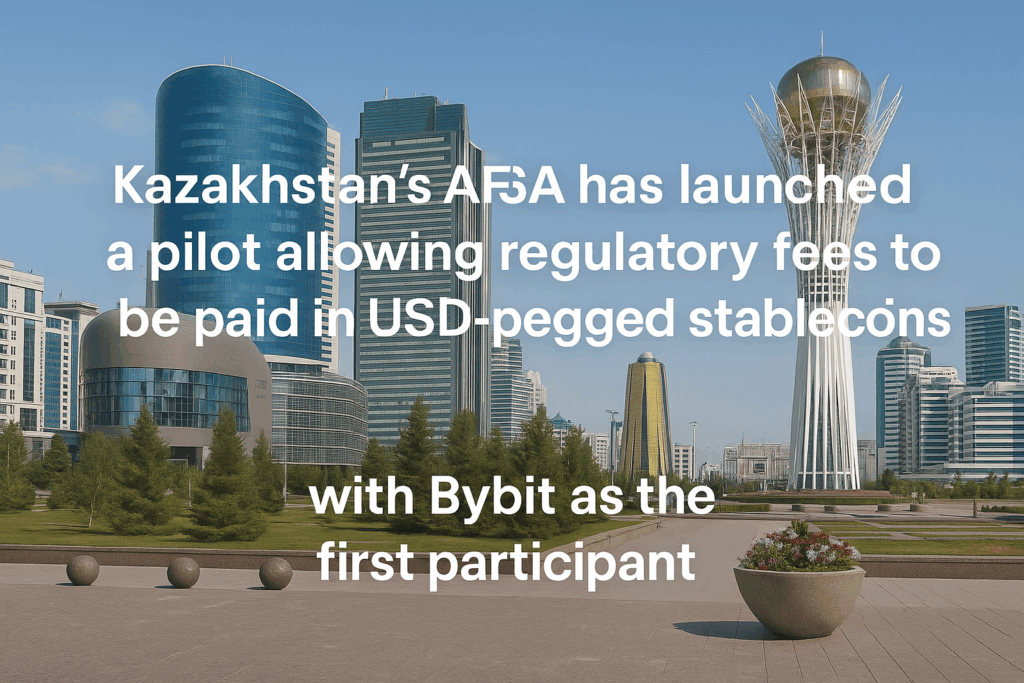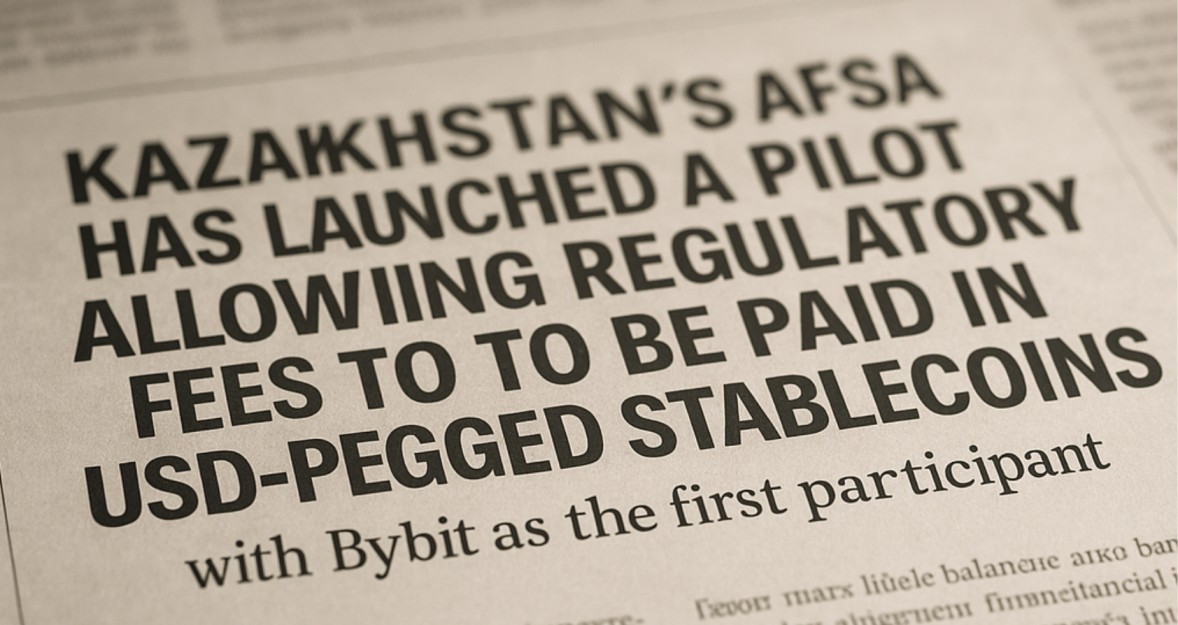Kazakhstan’s Astana Financial Services Authority (AFSA), which oversees the Astana International Financial Centre (AIFC), has launched a pilot program that allows licensed entities to pay regulatory and supervision fees using USD-pegged stablecoins such as USDT and USDC.
The pilot was officially unveiled during the Astana Finance Days 2025 event, with Bybit Kazakhstan, a subsidiary of Bybit Limited, becoming the first participant. Bybit signed a multilateral Memorandum of Understanding (MMoU) with AFSA to act as the inaugural partner in the program.
As part of the initiative, Bybit will provide a tailored solution combining a “QR Pay” interface and a dedicated stablecoin wallet infrastructure. This setup enables invoicing and payment in stablecoins, after which Bybit converts the stablecoin payments into fiat currency and remits them to AFSA’s designated bank account.
Why This Matters
- Faster, Cheaper, Transparent Payments
Traditional fee settlement methods like bank transfers can involve delays, intermediary charges, and currency conversion costs. The stablecoin route offers near-instant settlement, reduced fees, and improved transparency via blockchain records. - Better Alignment with Crypto-Native Treasuries
Many digital asset firms hold their liquidity and treasury in stablecoins. Allowing them to pay fees directly without unnecessary conversions reduces friction and risk. - Positioning Kazakhstan as an Innovator
By enabling stablecoin payments for regulatory fees, Kazakhstan is positioning the AIFC as a forward-looking fintech hub in Central Asia, sending a clear signal of openness to blockchain integration. - A Potential Global Precedent
Few regulators globally have formally allowed stablecoin-based settlement of regulatory fees. Kazakhstan’s move could become a model for other jurisdictions exploring payment digitization.
Key Operational Details & Considerations
- Eligibility: Only entities licensed under the AIFC for digital asset services are eligible to participate in the pilot.
- Agent Model: Participants don’t pay AFSA directly in stablecoins. Instead, Bybit acts as an intermediary, converting the stablecoins into fiat and settling them into AFSA’s bank account.
- Efficiency Gains: Settlement times could shrink from several days to minutes, with cost reductions of up to 90%.
- KYC / AML Compliance: Even with stablecoins, all participants must comply with KYC, AML, and standard regulatory obligations.
- Transparency & Audit Trail: On-chain transactions provide immutable records, improving auditability and reconciliation for AFSA.
Potential Risks and Challenges
- Stablecoin Counterparty Risk: The safety of using stablecoins depends on the issuer’s reserves and regulatory standing.
- Network Congestion and Fees: High blockchain activity could lead to slower settlement and higher costs.
- Liquidity for Conversion: Bybit must maintain sufficient liquidity to ensure quick and efficient conversion from stablecoins to fiat.
- Regulatory Framework Needs: Broader legal structures must adapt to recognize stablecoin payments in compliance with national financial laws.
- Scalability Concerns: As more firms join, the infrastructure will need to handle increased transaction volume without bottlenecks.

What to Watch Going Forward
- Participation Growth: Other licensed firms at the AIFC may join the program, and adoption levels will be a key indicator of success.
- Measured Outcomes: If AFSA publishes settlement efficiency and cost-saving data, it will validate the benefits of the program.
- Expansion Beyond Fees: The model could expand to include other types of government or financial payments, such as taxes or fines.
- Link with the Digital Tenge: Kazakhstan is already piloting a central bank digital currency (CBDC), the digital tenge. The interaction between stablecoin-based payments and CBDC frameworks will be critical.
- International Impact: Success could inspire other regulators globally to adopt similar pilots, giving Kazakhstan an early-mover advantage in regulatory innovation.
Bottom Line
Kazakhstan’s AFSA has taken a bold step by integrating stablecoin payments into regulatory processes. Bybit’s role as the first participant highlights both private and public sector interest in modernizing financial systems. If the pilot succeeds, it could serve as a blueprint for regulators worldwide, bridging the gap between traditional finance and blockchain-based infrastructure.







